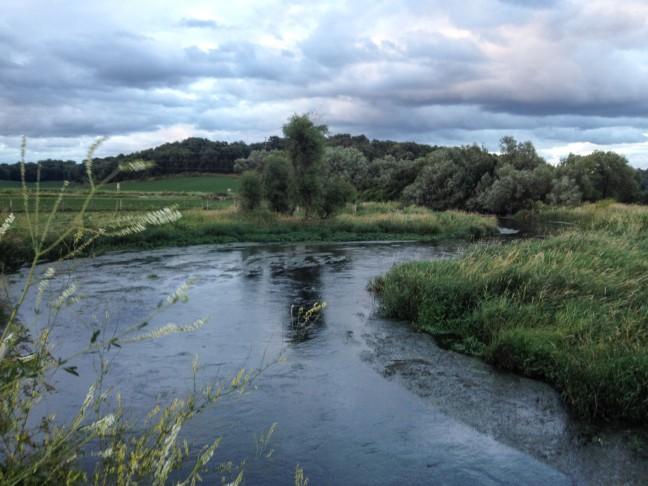Tuesday, the University of Wisconsin invited its 2018 Go Big Read author and eco-journalist, Dan Egan, to Shannon Hall to talk about his New York Times Best-Selling book, “The Death and Life of the Great Lakes,” which captivatingly documents the ecological history of the Great Lakes.
The completion of the Erie Canal in 1825 and the opening of the St. Lawrence Seaway in 1959, which allowed commercial ships to travel from the Atlantic to Chicago, marked the beginning of the end for the Great Lakes’ ecosystems — the never-ending march of invasive species, from the parasitic sea lamprey to the innocuous-looking but life-sucking zebra and quagga mussels began to overwhelm the lakes and its inhabitants.
At the end of his talk, after responding to an audience member’s question about what we should do next, Egan reminded the audience that while regulations have adverse side-effects, they do a lot of net-good for the environment. He reminded everyone of the horrors before the passage of the Clean Water Act, when the Cuyahoga River was constantly bursting into flames from all the oil slicks. Applause filled the room as he called for a greater appreciation of regulation.
One of the strongest arguments for environmental regulation is a type of liberty argument. By polluting the water in which someone enjoys swimming, one coerces that person to go somewhere else for clean water. Because everyone is in some way connected to water, as it is used as a public good, it is important for a society to collectively take care of the natural resources.
But there is another coercive process going on, in the way government responds to these concerns. The issue begins and ends with this fundamental idea: the country’s system of self-government consists of three separate branches that check and balance each other’s powers.
The executive branch, while it has the ability to enact regulations with the full force of law, cannot expand their powers beyond what Congress and the Constitution gives them.
Take, for example, the Clean Water Act, a collection of regulatory laws from Congress partly responsible for saving the country from environmental disaster by reducing the total amount of harmful pollutants dumped by municipalities and industries into the country’s waterways. This is a very well-written law because of its simplicity: “The objective of this act is to restore and maintain the chemical, physical, and biological integrity of the nation’s waters.”
The problem is that most of this regulatory enforcement power is bestowed on the Environmental Protection Agency and the U.S. Army Corps of Engineers, which are not legislative bodies. These two federal agencies have been taken to the Supreme Court twice in the cases SWANCC v. USACE and Rapanos v. US over their interpretation of the scope of the “nation’s waters.”
One petitioner, John Rapanos, faced 5 years in prison and hundreds of thousands of dollars in criminal and civil fines, simply for backfilling his own property, deemed a wetland and thus under federal protection, that he wished to develop. The estimated cost of a permit from the USACE at the time was about $270,000.
While the law quite plainly defines the authority to be over “navigable waters,” the executive branch has published its own set of regulations in the Federal Register re-defining the types of water they can regulate, in contravention to the Supreme Court’s precedents which assert the federal government only has jurisdiction over waters with a “significant nexus” to waters that are navigable. It is commonly referred to as the Clean Water Rule, which is 75 pages long, and dedicated to defining something as simple as water.
Last February, President Donald Trump released an executive order calling on the EPA to review its definitions of “waters of the United States.” While it may seem odd to have debates over exactly what types of water are considered protectable under the CWA, it is crucial to point out that at the CWA’s outset, it states, “it is the policy of the Congress to recognize, preserve and protect the primary responsibilities and rights of states to prevent, reduce and eliminate pollution, to plan the development and use … of land and water resources, and to consult with the administrator in the exercise of his authority under this act.”
This statement, in one sentence, maintains that ultimately it is the states’ responsibility to regulate water pollution — not the executive branch, or any of its agencies.
While efforts continue to protect Great Lakes, challenges lay ahead
All this is to say that the main objection people tend to have with regulations is not that they value industry or “crony capitalism” over the environment — rather, when the executive branch tries to make laws and enforce them, they end up needing to write and re-write more pages of regulation to define precisely every word, every detail and unintentionally harm citizens in the process.
Lianna Schwalenberg ([email protected]) is a fifth-year senior majoring in communication arts and philosophy.




















